What to know about buying in Queens Village, Queens, a commuter nabe with a suburban feel

This 1,716-square-foot, single-family detached house, built in 1930, has a separate two-car garage. It is listed for $799,000.
The eastern Queens community of Queens Village, where Hollywood legend Paul Newman resided briefly in the 1950s, offers multicultural city ambiance in a suburban-like setting.
Although it’s a commuter community where you will need a car, you won’t have much trouble finding a parking place.
In this week’s Buy Curious, Matthew Langer, a broker at Weichert Realtors–Langer Homes, and Camilo Henriquez, an agent at Berkshire Hathaway HomeServices Laffey International Realty, give us the inside story on Queens Village.
The question:
I’ve heard that Queens Village is a convenient, easy-going place to live. What can you tell me about it?
The reality:
“My favorite thing about Queens Village is that it has a great neighborhood atmosphere but also a city atmosphere, and it's mostly families,” Langer says.
Calling Queens Village a “hidden suburbia,” Henriquez notes that it’s also pet-friendly—thanks to parks to run and play in as well as residential streets for walking around.
Where is it?
On the border of Long Island’s Nassau County, Queens Village is bounded on the north by Oakland Gardens, on the south by Cambria Heights, on the east by Bellerose, and on the west by Hollis.
Why would NYers want to move to Queens Village?
Langer says that people love the idea of being in a quiet, peaceful area and yet within driving distance to all the amenities a big city has to offer.
That's because you are close to all the major highways—Cross Island Parkway, Belt Parkway, Southern State Parkway, Long Island Expressway, and Grand Central Parkway.
"It’s a perfect area for raising kids and buying starter homes that are roomy and have driveways," Henriquez adds. "There are plenty of parks and recreation, and there are great delis and restaurants.”
Where in Queens Village should you live?
According to Langer, the community doesn't have named sections; instead, Queens Village is divided into three zip codes, and buyers sometimes request specific ones: 11429 refers to the southernmost part; 11428 is the middle section; and 11427, the northernmost area, contains the community’s only co-ops and has the most expensive single- and two-family houses. Queens Village has no condo buildings or rental buildings.
What are housing and pricing like?
Inventory is scarce: There are only 21 single-family houses and co-ops on the market in Queens Village, according to StreetEasy.
“It’s been a seller’s market, but buyers are getting more options now because mortgage interest rates have been going up,” Langer says. “Buyers can now choose and not have to enter into bidding wars.”
In his estimation, some 80 percent of the housing stock is single-family detached houses, some with detached garages. “But most people use [the garages] for storage because they can park in their driveways,” Langer says.
The prices are largely defined by the zip codes mentioned above: In general, single-family houses sell for $600,000 to $998,000. Those in the 11429 area typically bring $600,000 to $800,000, those in 11428 are in the $700,000s to the $900,000s, and in 11427, prices start at $900,000.
Two-family houses generally run between $700,000 and $1.4 million.
Co-op prices range from $150,000 to $400,000. There are four co-op buildings, all in the 11427 area. Bell Park Manor Terrace, which dates to 1951, has two-story garden apartments. Cambridge Hall, which was built in 1956, has 96 apartment units. Hillside Gardens, which has six stories and 53 units, was built in 1941. The 900-unit Hilltop Village, built in 1954, has nine buildings in four separate complexes.
Rentals are typically in two-family houses. Prices range from $1,500 to $2,000 for a one-bedroom unit, $2,000 to $2,750 for a two bedroom, and $3,000 to $4,000 for a three or four bedroom, which typically would be an entire house.
Is there a lot of new development?
There’s not much new development other than investors buying individual homes and renovating the interiors before selling.
What’s the transportation situation?
Although there is no subway service, several bus lines serve the area. The most popular are the Q36, the Q43 and the Q110, all of which connect to the F train in Hollis, and the Q88.
The Long Island Rail Road has a stop in Queens Village that goes to Brooklyn’s Atlantic Terminal.
What is there to do?
Two prime green spaces that residents frequent are within a five-minute drive from Queens Village.
Alley Pond Park, the second largest park in the borough, is over 600 acres. Its public high-ropes adventure course (part of a lost-cost outdoor education program) is the largest in the Northeast—and the first in NYC.
Covering more than 350 acres, Cunningham Park offers a variety of activities, including tennis, basketball, cricket, and soccer—plus a designated dog run.
In addition to the famous horse-racing track, Belmont Park includes the UBS Arena, home to the New York Islanders National Hockey League team; it also hosts a variety of concerts and events.
What’s the restaurant/nightlife situation?
Most of the community’s shops and restaurants are on Jamaica and Hillside avenues. “There’s not much nightlife,” Langer says, noting that there is, however, a large selection of Italian, West Indian, Jamaican, and Guyanese restaurants.
Popular places include Gaby’s Pizza, which borders the community and opened in 1964; the Italian restaurants Cara Mia and Italian Affair; Hibiscus Restaurant & Bar, which serves a variety of dishes ranging from seafood to West Indian cuisine; and the Caribbean restaurant CD.
How about grocery stores?
There are several supermarkets, including Key Food, Food Universe, and Foodtown.
Check out these listings in Queens Village.
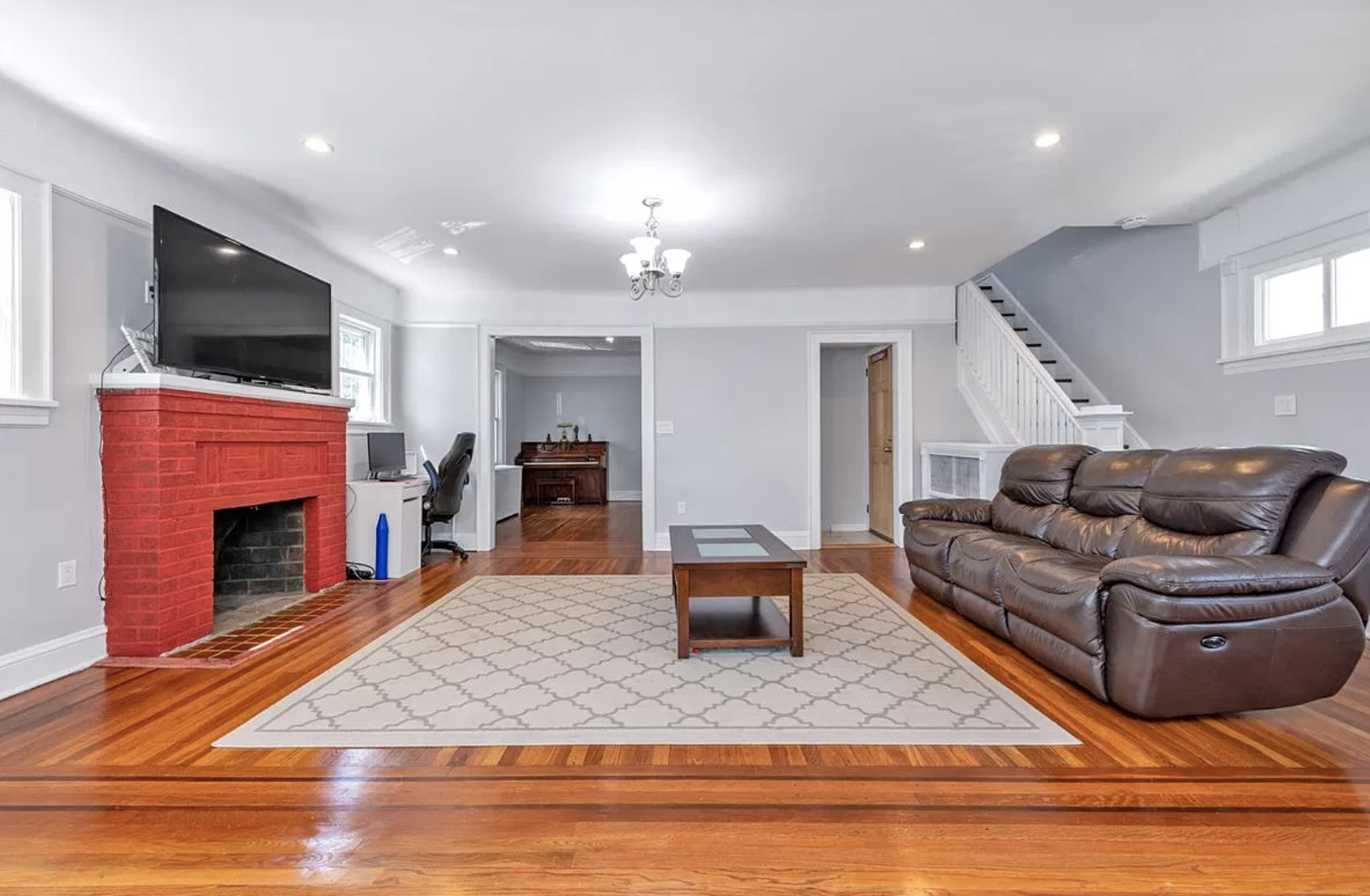
109-28 217th St.
Listed for $799,999, this 1,716-square-foot, single-family detached house, built in 1930, has three bedrooms (plus a bonus room on the third floor), two full bathrooms, and one half bathroom. Other features include a private driveway, two-car garage, finished basement, hardwood floors, wood-burning fireplace, formal dining room, and solar panels.
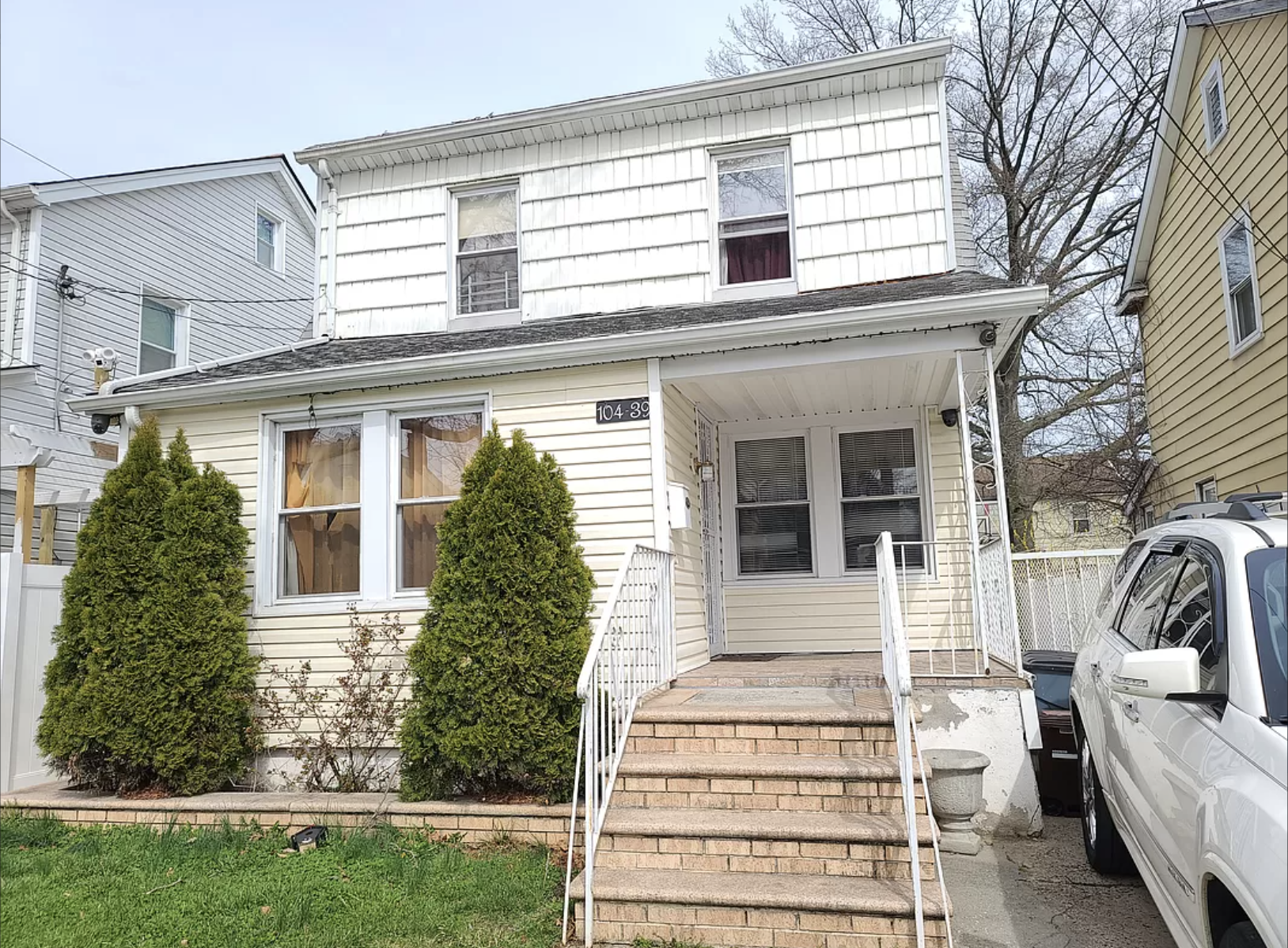
104-39 209th St.
With three bedrooms, two full bathrooms, and one half bathroom, this 1925 single-family house is listed for $679,900. The two-story residence has a covered front porch, a backyard with a deck, and a living room, dining room, and large finished attic.
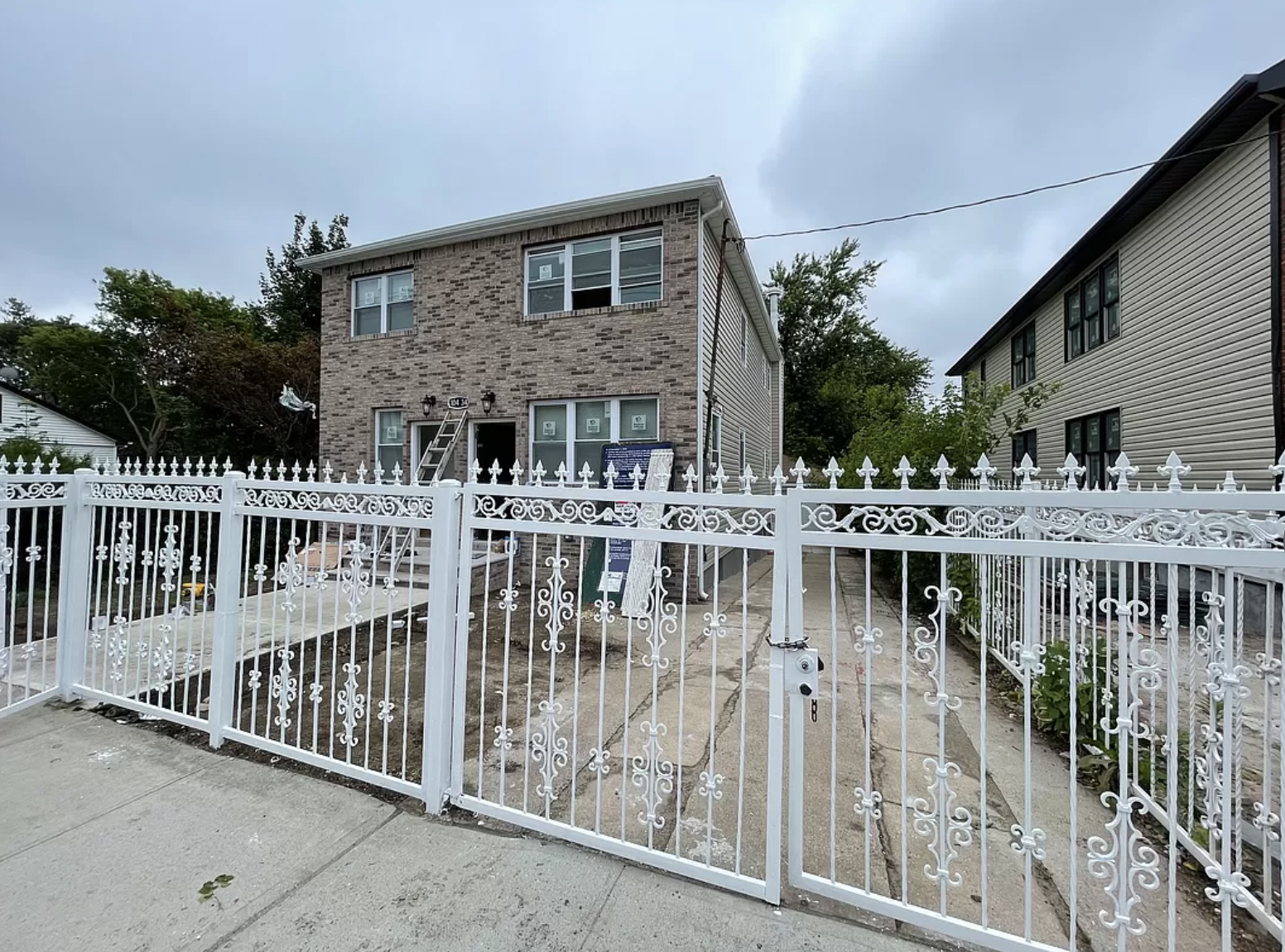
104-34 219th Street, #1
Built in 1930, this two-family residence has a combined eight bedrooms and four bathrooms and is listed for $1.299 million. It has been fully renovated, with stainless steel appliances in the kitchens, hardwood floors, and a primary suite with a walk-in closet, plus a garden and courtyard.
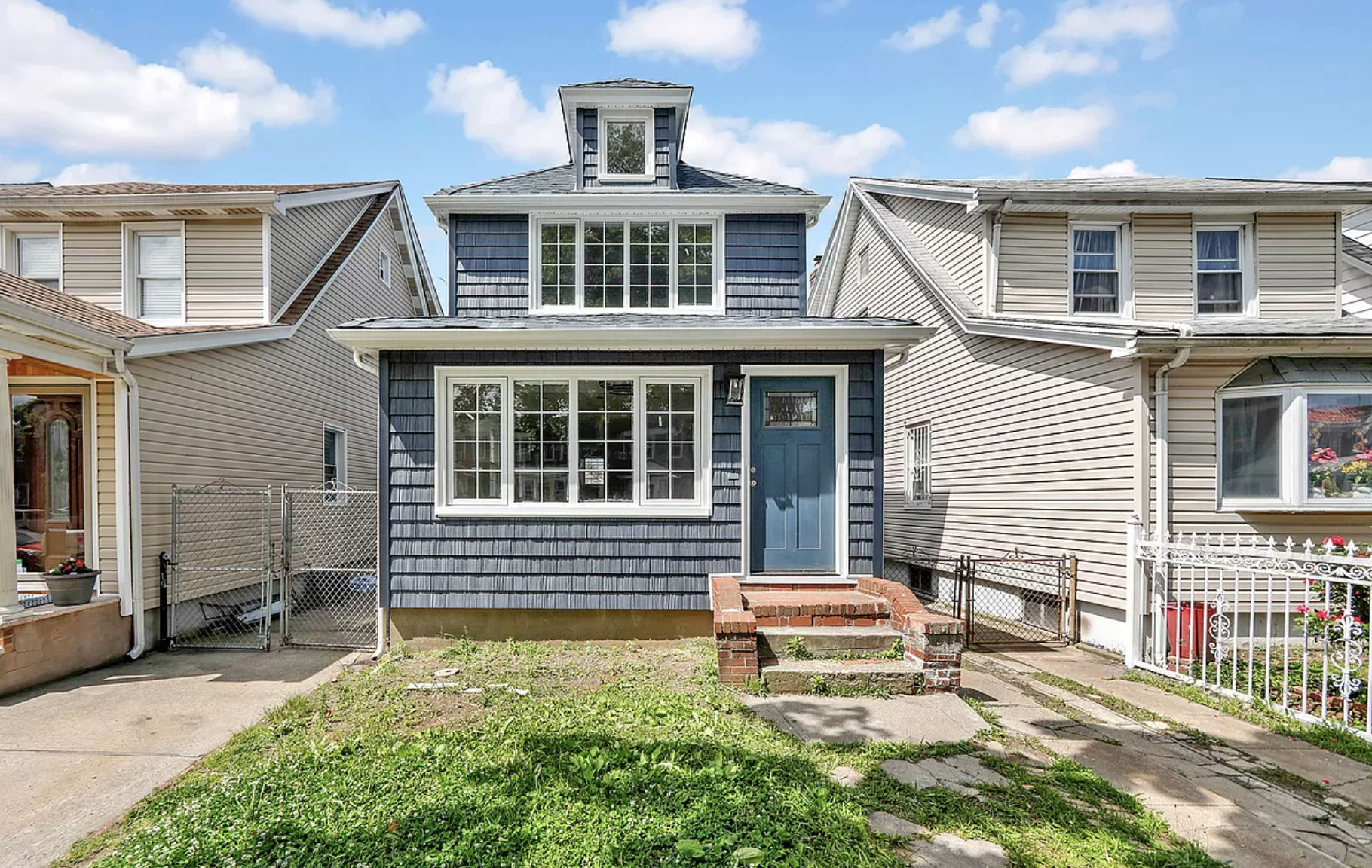
92-34 215 Place
This gut-renovated, two-story, one-family house, which was built in 1920, is listed for $879,000. It has new plumbing, flooring, electrical, and HVAC systems. There also is a finished basement.
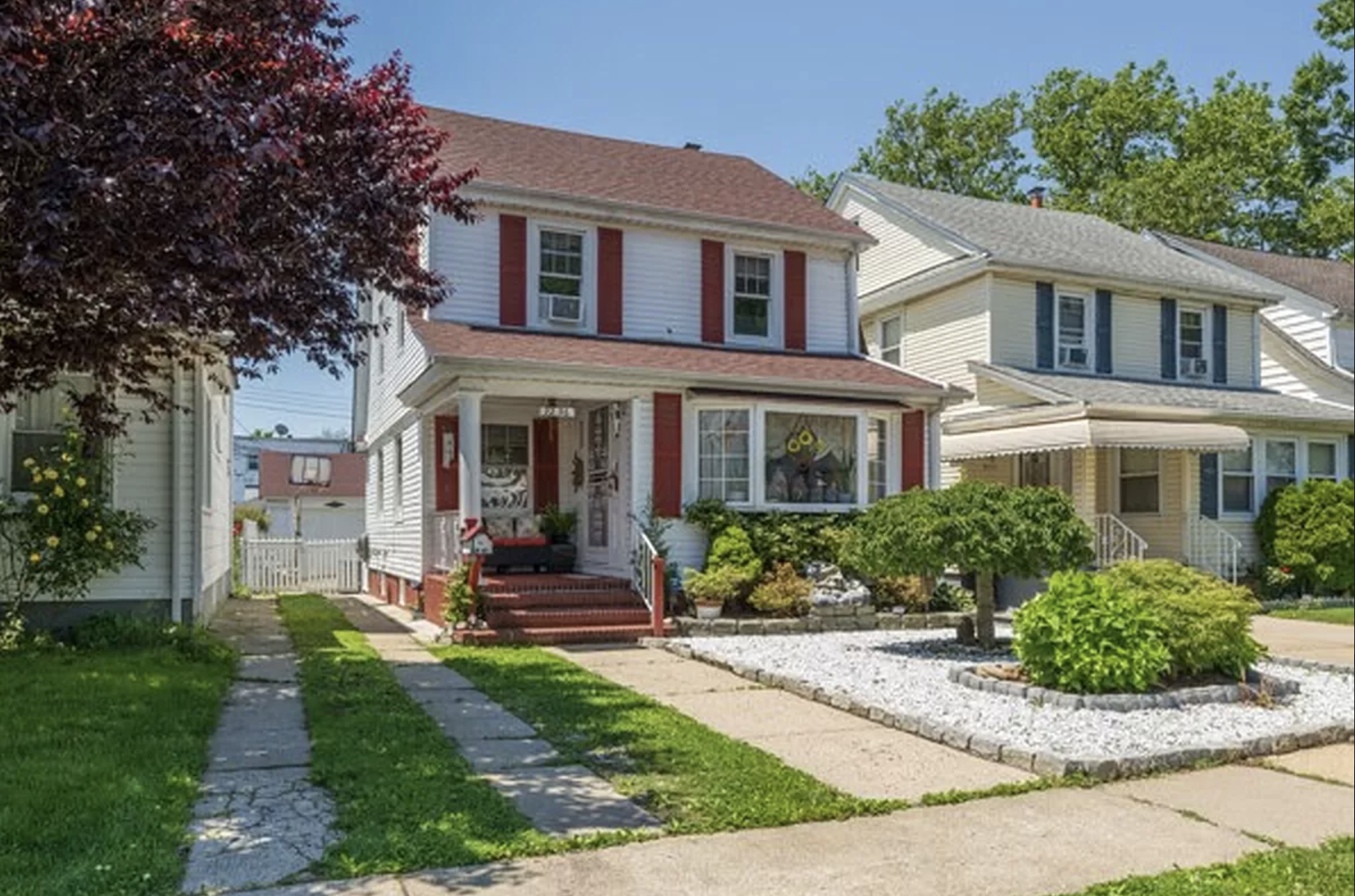
92-56 216th St.
Listed for $799,000, this 1,579-square-foot, two-story detached house, which dates to 1930, has three bedrooms and two bathrooms. Other features include a Florida room, finished attic, living room, dining room, eat-in kitchen, and hardwood floors.
Nancy A. Ruhling is a freelance writer based in New York City.



























